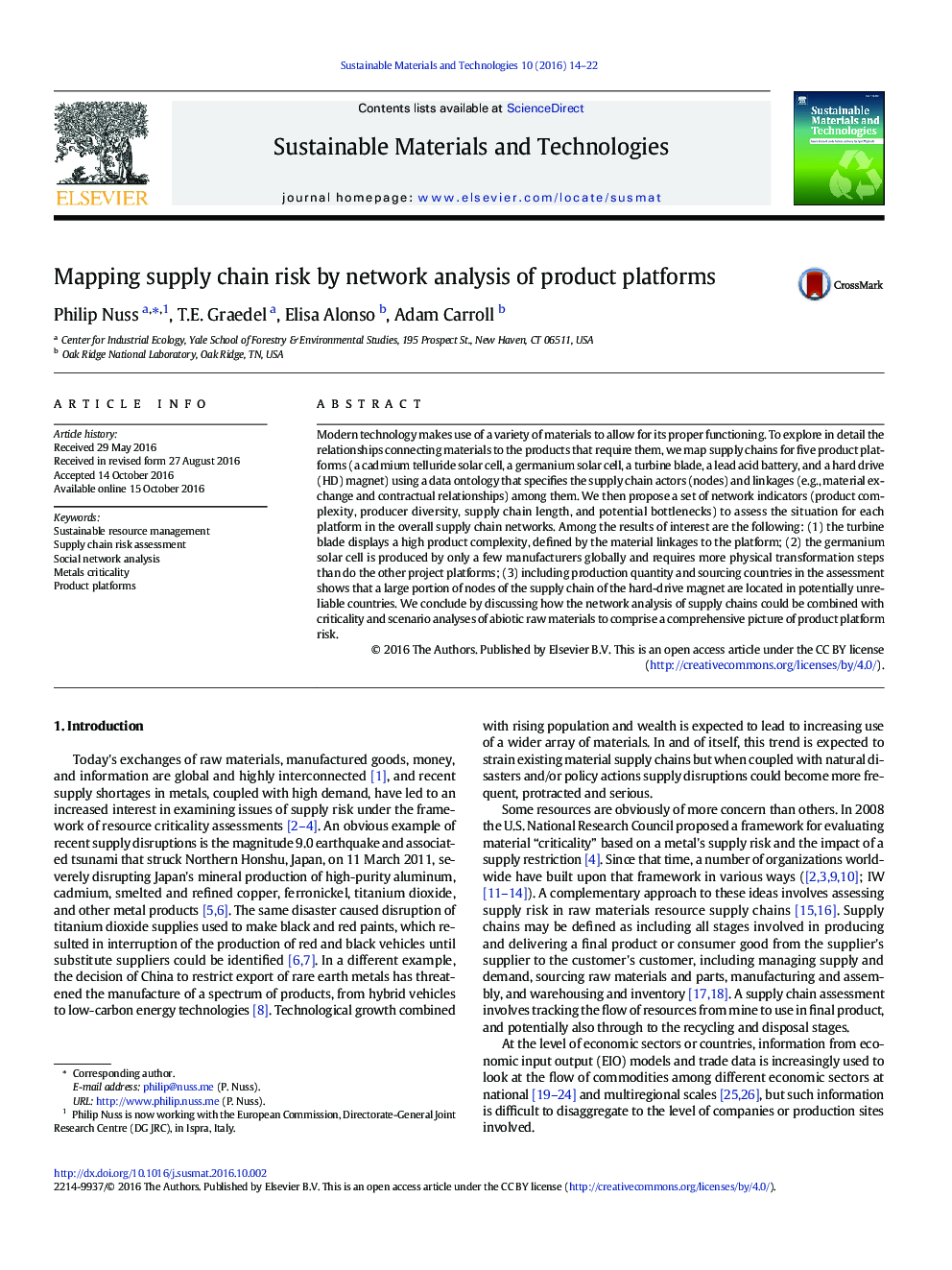| Article ID | Journal | Published Year | Pages | File Type |
|---|---|---|---|---|
| 5030702 | Sustainable Materials and Technologies | 2016 | 9 Pages |
Modern technology makes use of a variety of materials to allow for its proper functioning. To explore in detail the relationships connecting materials to the products that require them, we map supply chains for five product platforms (a cadmium telluride solar cell, a germanium solar cell, a turbine blade, a lead acid battery, and a hard drive (HD) magnet) using a data ontology that specifies the supply chain actors (nodes) and linkages (e.g., material exchange and contractual relationships) among them. We then propose a set of network indicators (product complexity, producer diversity, supply chain length, and potential bottlenecks) to assess the situation for each platform in the overall supply chain networks. Among the results of interest are the following: (1) the turbine blade displays a high product complexity, defined by the material linkages to the platform; (2) the germanium solar cell is produced by only a few manufacturers globally and requires more physical transformation steps than do the other project platforms; (3) including production quantity and sourcing countries in the assessment shows that a large portion of nodes of the supply chain of the hard-drive magnet are located in potentially unreliable countries. We conclude by discussing how the network analysis of supply chains could be combined with criticality and scenario analyses of abiotic raw materials to comprise a comprehensive picture of product platform risk.
Graphical abstractDownload full-size image
